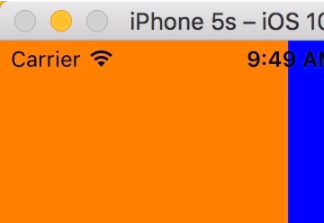前言
文中将要介绍以下四点内容
下面话不多说了,来一起看看详细的介绍吧
一 . 意义在于节约时间成本
|
1
2
3
4
|
like我在编译器键入 strong, 回车自动生成@property (nonatomic, strong) <#class#> *<#object#>; |
二 . 如何自定义代码块
如下图所示 选中一行代码右键 crate code snippet
右上角方框快速进入

图1
下图填入描述, 以及快捷方式

图2
三 . ios xcode自定义代码块迁移
- command + shift + g. 前往如下路径的文件夹
- 路径 : ~/library/developer/xcode/userdata/codesnippets
- 把文件夹内部的文件复制, 粘贴到另一台电脑的xcode同样的文件夹中即可
- 重启xcode
四 . 代码块编写
下面我举个栗子 . 0.o
|
1
2
3
4
5
6
7
8
9
10
11
12
13
14
15
16
17
18
19
20
21
22
23
24
25
26
27
28
29
30
31
32
33
|
- (uitableview *)<#tableview#> { if(!<#tableview#>) { <#tableview#> = [[uitableview alloc]initwithframe:self.view.bounds style:uitableviewstyleplain]; <#tableview#>.delegate =self; <#tableview#>.datasource =self; [<#tableview#> registerclass:[<#cell#> class] forcellreuseidentifier:@"cellidentifier"];} return <#tableview#>;}#pragma mark - tableview delegate- (nsinteger)numberofsectionsintableview:(uitableview *)tableview { return <#expression#>}- (nsinteger)tableview:(uitableview *)tableview numberofrowsinsection:(nsinteger)section { return <#expression#>}- (uitableviewcell *)tableview:(uitableview *)tableview cellforrowatindexpath:(nsindexpath *)indexpath { <#uitableviewcell#> *cell = [tableview dequeuereusablecellwithidentifier:@"cellidentifier"]; return cell; }- (void)tableview:(uitableview *)tableview didselectrowatindexpath:(nsindexpath *)indexpath { } |
注: <#class#> 即为可以替换的词语.
我再举个栗子
|
1
|
@property (nonatomic, assign) <#class#> <#object#>; |
总结
留作备忘
给需要的人
好了,以上就是这篇文章的全部内容了,希望本文的内容对大家的学习或者工作具有一定的参考学习价值,谢谢大家对服务器之家的支持。
原文链接:https://www.jianshu.com/p/a901cd3f8139


















